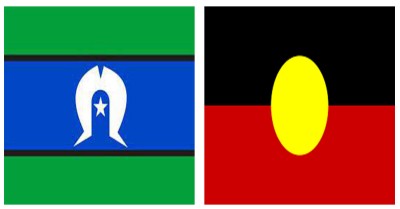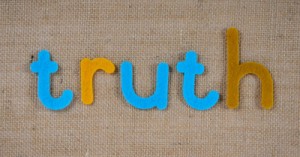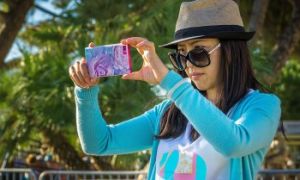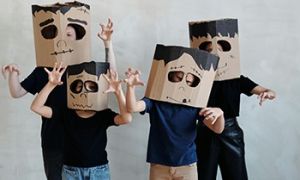Among the important guiding principles of the National Quality Framework is ‘Australia’s Aboriginal and Torres Strait Islander cultures are valued. The following article provides information on recognising and valuing Aboriginal and Torres Strait Islander cultures through early childhood services through the display of the flags.
The Aboriginal Flag
The Aboriginal flag is divided into two horizontal haves. The top half of the flag is black and symbolizes the Aboriginal people while the bottom red half depicts the earth. The red colour also represents ochre, which is used by Aboriginal people in important ceremonies. At the centre of the flag is a yellow circle which stands for the sun, the constant giver of life. The Aboriginal flag represents cultural resilience, affirmation and identity. The flag was designed by Harold Thomas or Bundoo, a Luritja man from central Australia and a member of the Stolen Generations. It was first flown at Victoria Square, Adelaide, on National Aborigines Day on 12 July 1971 and in 1995, the Aboriginal flag was formally recognised as a ‘flag of Australia’ by the Australian Government. Today the flag has been adopted by all Aboriginal groups and is flown or displayed permanently at Aboriginal centres throughout Australia.
The Torres Strait Islander Flag
The Torres Strait Islander Flag comprises three horizontal coloured stripes, with green at the top and bottom, and blue in between, divided by thin black lines. A white dhari or headdress is depicted in the centre, with a five-pointed star underneath it. The colour green represents the land, blue stands for the sea, and black, for the people. The white dhari symbolizes all Torres Strait Islanders, and the five-pointed star represents the island groups. The star is also an important symbol for the seafaring Torres Strait Islander people as it is used in navigation. The colour white of the star represents peace while the whole flag stands for the unity and identity of all Torres Strait Islanders. The late Bernard Namok from Thursday Island designed the Torres Strait Islander flag which was recognised as one of the three flags of Australia by the Australian Government in 1995.
When using Aboriginal and Torres Strait Islander Flags, here are a few things for educators to keep in mind:
- Display Aboriginal and Torres Strait Islander flags throughout the year at your service, accompanied by Acknowledgement of Country signs.
- You can contact your local member of parliament to ask them to supply you with an Aboriginal, Australian and/or Torres Strait Islander flag.
- When flying the flags, ensure that you explain to children what they are, what they represent and the meanings of the flags.
- Use the colours of the flags in art and craft activities with children. These could range from making Aboriginal flag handprints in red, black, and yellow to Torres Strait Islander finger painting with green, blue and white but ensure you discuss with children the meanings of the colours.
- When embedding Aboriginal and/or Torres Strait Islander flags in activities, purchase authentic resources designed by and ethically sourced by indigenous people.
Further Reading
From Play School To Preschool - Learning From ATSI Educators - This activity encourages children to appreciate the positive things that they can learn from Aboriginal and Torres Strait Islander people every day.
Walking Together - A Resource For Inclusive Practice Related To ATSI People - The Walking Together resource focuses on a variety of topics that non - Aboriginal Educators in early learning services need to be familiar with and offers suggestions for practice.
Including Aboriginal and Torres Strait Islander Cultures In Your Service - The following article provides information on Supporting Educators in Learn About Aboriginal Australia, Including Aboriginal Australia Within The Service, Learning Opportunities and Experiences and more.
Aboriginal and Torres Strait Islander Flag Posters - The Aboriginal and Torres Strait Islander Flag Posters have both Aboriginal and Torres Strait Islander flags. There is also an information page for each flag that includes the meaning of the flags and what each flag represents. These can be displayed within the learning environment.
References:
- Children Have A Strong Sense Of Identity
- Torres Strait Islander flag







 As an Educator in Australia, your pay rate falls under the Children’s Services Award 2010. This award states the minimum amount that an employer can
As an Educator in Australia, your pay rate falls under the Children’s Services Award 2010. This award states the minimum amount that an employer can When working as a qualified Early Childhood Teacher (with a university degree) within a service, your rate of pay will come from the Educational Services
When working as a qualified Early Childhood Teacher (with a university degree) within a service, your rate of pay will come from the Educational Services When working as a Diploma Qualified Educator your pay rate is from the Children's Services Award 2010. This Award states your minimum rate of pay
When working as a Diploma Qualified Educator your pay rate is from the Children's Services Award 2010. This Award states your minimum rate of pay When working as a Cert 3 Qualified Educator, your pay rate is from the Children's Services Award 2010. This Award states your minimum rate of
When working as a Cert 3 Qualified Educator, your pay rate is from the Children's Services Award 2010. This Award states your minimum rate of Educational Leaders play a crucial role in their early childhood service by ensuring that the educational program aligns with best practices and supports the holistic
Educational Leaders play a crucial role in their early childhood service by ensuring that the educational program aligns with best practices and supports the holistic In early childhood education and care, ratios are more than a technicality—they are a frontline safeguard. Every child deserves responsive supervision, emotional connection, and developmental
In early childhood education and care, ratios are more than a technicality—they are a frontline safeguard. Every child deserves responsive supervision, emotional connection, and developmental With the new national child safety reforms kicking in on 1 September 2025, early childhood services like yours have a real opportunity to lead the
With the new national child safety reforms kicking in on 1 September 2025, early childhood services like yours have a real opportunity to lead the Here’s a comprehensive Mobile Phone and Smart Watch Policy tailored for early childhood education and care (ECEC) services in Australia, aligned with the latest 2025
Here’s a comprehensive Mobile Phone and Smart Watch Policy tailored for early childhood education and care (ECEC) services in Australia, aligned with the latest 2025 The Sea of Fish Challenge is a national initiative that invites children, educators, families, and communities to create and display fish artworks as a symbol
The Sea of Fish Challenge is a national initiative that invites children, educators, families, and communities to create and display fish artworks as a symbol Across the early childhood education and care sector, educators are sounding the alarm: current staffing ratios are insufficient to deliver safe, meaningful, and developmentally appropriate
Across the early childhood education and care sector, educators are sounding the alarm: current staffing ratios are insufficient to deliver safe, meaningful, and developmentally appropriate


